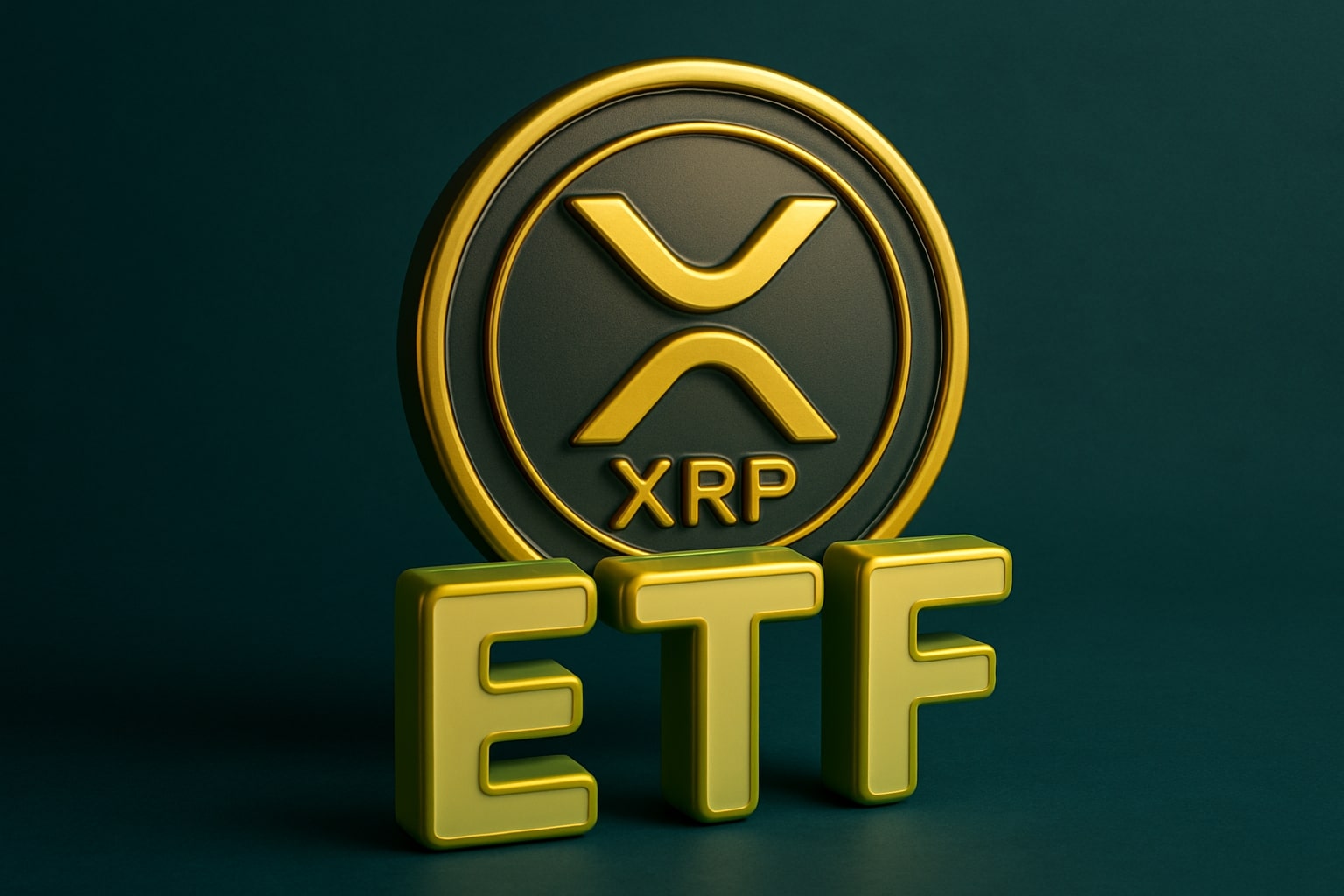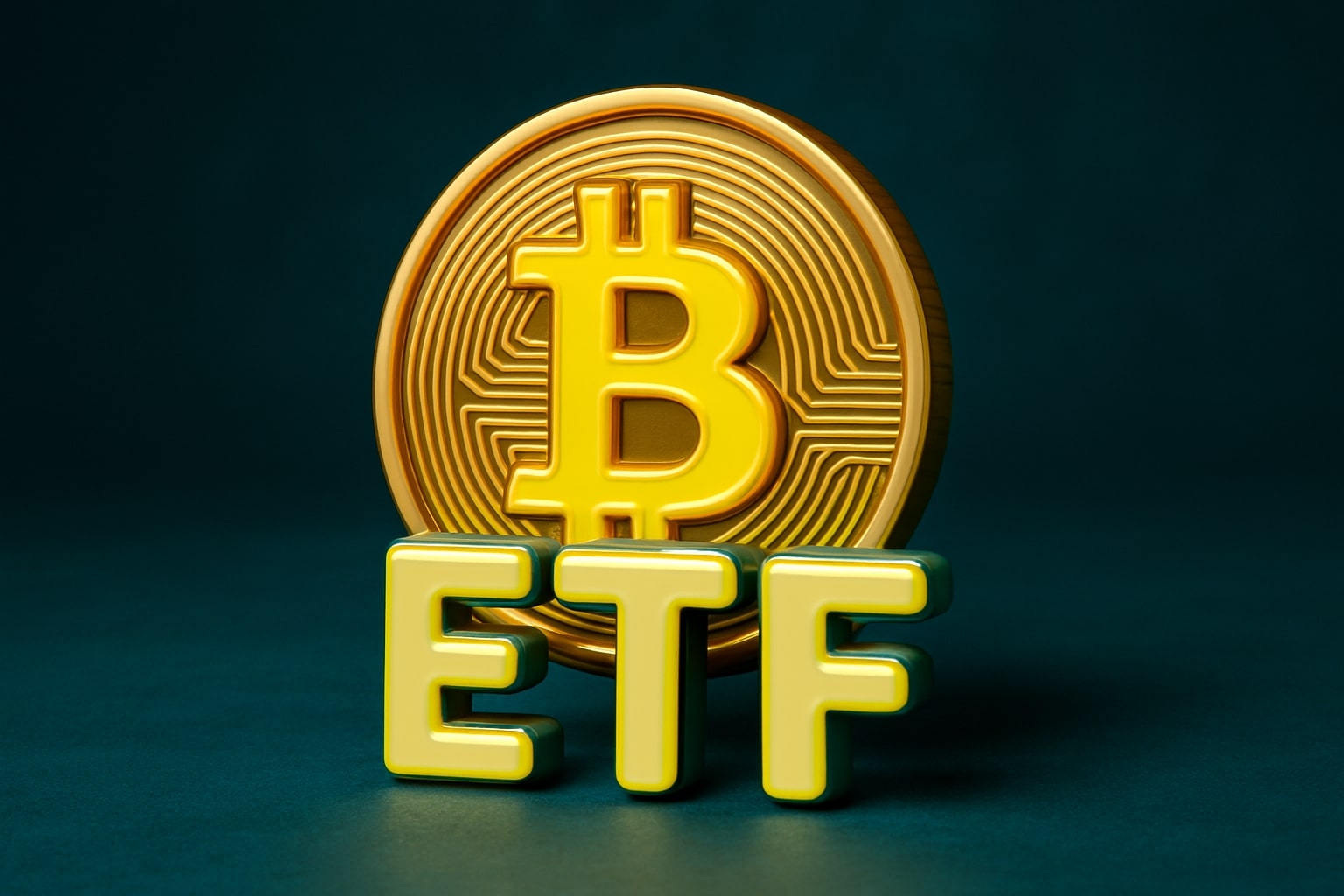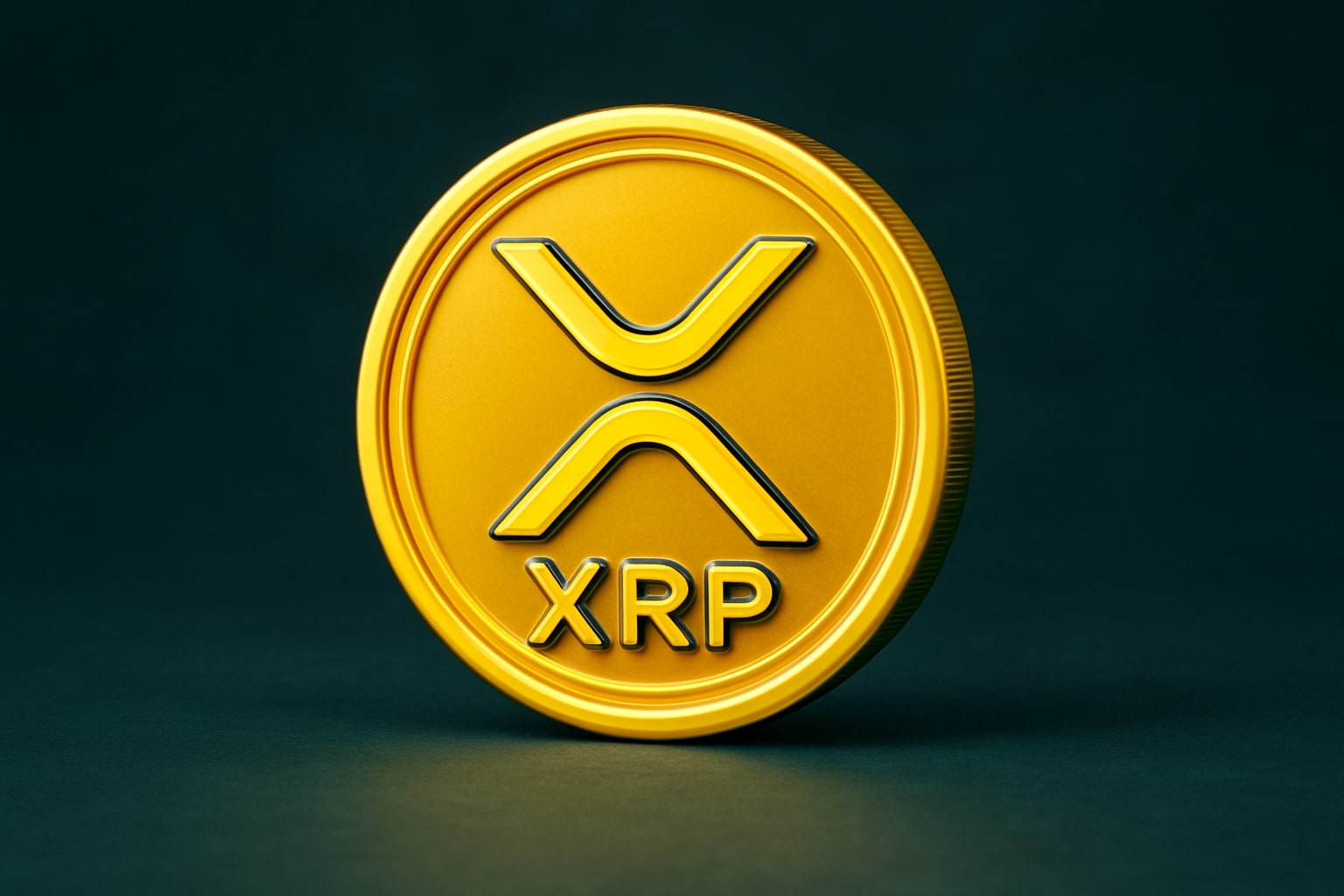
XRPC ETF Roars Out of the Gate With $26M as XRPI at $13.51 and XRPR at $18.98 Lead a New XRP ETF Market Cycle
XRP stabilizes near $2.50 while XRPI and XRPR tighten spreads ahead of the largest coordinated XRP ETF launch window ever | That's TradingNEWS
XRPI ETF And XRPR ETF Position Themselves In A New XRP-Led Market Regime As Price Gravitates Around $2.47–$2.50
The emergence of multiple XRP exchange-traded funds is colliding with one of the most consequential weeks in the broader digital-asset market. XRPI (NASDAQ:XRPI) opened the day pinned near $13.51 after sliding from $13.88, with intraday volatility stretching across a $13.51–$14.82 range that reflects a market re-pricing the impact of imminent institutional access. Meanwhile, XRPR (BATS:XRPR) stabilized around $18.98, retreating from a prior close of $19.36, as spreads widened early in the session before narrowing once liquidity returned in the afternoon. Both ETFs are now trading off year-highs — XRPI with a $12.40–$23.53 12-month range and XRPR with a $17.33–$25.99 band — yet neither instrument shows the disorder normally associated with new-issuance markets. Instead, pricing has aligned tightly with the spot token, where XRP-USD hovered between $2.47 and $2.50, extending a weekly gain of nearly 8% despite market-wide deleveraging.
Xrpc’S Debut Ignites The Xrp Etf Era With $26M In Fresh Volume And A New Competitive Structure Taking Shape
The launch of Canary Capital’s spot XRP ETF (XRPC) reset the narrative around XRP exposure entirely. The fund’s first hours of trading generated $26 million in volume, a figure that would have been dismissed as inconsequential during Bitcoin’s ETF mania but is now viewed as a structural shift: institutions are allocating to utility-based digital assets with active payment networks. Unlike synthetic or derivative-based structures, XRPC holds physical XRP with custody split between Gemini Trust and BitGo, two custodians whose prominence accelerated after the SEC cleared generic standards for digital-asset funds. Canary’s ETF charges a 0.50% fee, placing it above Bitwise’s yet-to-launch XRP product priced at 0.34%, but the premium has not deterred early order flow — a sign investors are rewarding first-mover advantage more than fee structure.
Xrpi Etf Movement Reflects Pre-Etf Anticipation Surging Into Real Fund Flows As Nasdaq Prepares For Multiple Xrp Listings
As XRPI fluctuated between $13.51 and $14.82, underlying market depth revealed that buyers began stepping in aggressively once the Canary filing was confirmed as active. Nasdaq’s internal approval timeline triggered automated liquidity provisioning, tightening spreads around the midpoint while keeping volume near its 614K average. The ETF’s behavior is consistent with pre-launch setups for Solana and Ethereum: price dislocation narrows as order books internalize risk from future spot inflows. XRPI is not yet experiencing the runaway premiums that defined aggressive retail accumulation in altcoin ETFs, but the shift from $13.00 to the upper $13s despite a market-wide liquidation wave suggests that the fund has already become a vehicle for tactical positioning ahead of the next issuance batch.
Xrpr Etf Trades With A Higher Elasticity As Market Adjusts To Its 1.96% Decline And Wider $18.98–$20.60 Band
XRPR's structure differs sharply from XRPI: its trading behavior reflects a blend of retail speculation and early institutional probes. After declining 0.38 points to $18.98, the ETF endured a wider $18.98–$20.60 intraday span — a range almost twice the width of XRPI’s — showing that XRPR is serving as the liquidity outlet for traders unwilling to wait for the full sequence of upcoming listings. This is especially evident during periods when BTC and SOL experience synchronized drawdowns. As Bitcoin fell 2.5% and Solana dropped 4.5%, XRPR’s depth thinned briefly, yet the price did not collapse beyond the lower $18 handle, implying that market makers are pricing in future demand once Franklin Templeton, Bitwise, 21Shares, CoinShares and Grayscale launch their own XRP ETFs later this month.
Xrp-Usd Outperforms Majors With A Move Toward $2.50 As Market Digests $583M In Liquidations
Despite $583 million evaporating from leveraged positions across digital assets — with $479 million in longs wiped out — XRP-USD became the only large-cap cryptocurrency in positive territory heading into the ETF debut window. The token’s ability to remain anchored near $2.50 while Bitcoin slid toward $102,100–$103,000 and Ethereum retreated to $3,218 highlights a rotation that rarely occurs: capital exiting high-beta assets and entering XRP during regulatory uncertainty. Retail sentiment on Stocktwits flipped from neutral to bullish within hours, and price tracking across major exchanges confirmed that bid density thickened at $2.46–$2.48, signaling conviction that ETF-driven flows are strong enough to counteract macro-level deleveraging.
The Xrp Etf Calendar Creates The Fastest Multi-Issuer Rollout In Digital-Asset History
The timeline revealed by Paul Barron reshaped expectations across the industry. Canary’s listing triggered a cascade of synchronized dates: Franklin Templeton between Nov. 14–18, Bitwise between Nov. 19–20 with a 0.34% fee, 21Shares and CoinShares between Nov. 20–22, and Grayscale later in November at 0.35%. The clustering of launches within a single 10-day window has never occurred in crypto ETF history — even Bitcoin’s approval cycle staggered issuers. This compressed rollout is partially due to regulatory catch-up after the 43-day government shutdown, which paused SEC reviews and created a backlog that is now being cleared in bulk. For XRP ETFs, the effect is profound: market makers must price in cumulative inflows across multiple issuers, not single-fund dynamics.
Read More
-
JBND ETF Stabilizes Near $54.16 as Cooling Real Yields and Firm Credit Spreads Fuel a Stronger Outlook
13.11.2025 · TradingNEWS ArchiveStocks
-
IBIT Dominates Bitcoin ETF Flows as BTC-USD Battles $100K Amid $524M Inflow and $278M Outflow Shock
13.11.2025 · TradingNEWS ArchiveCrypto
-
Natural Gas Price Surges Toward Multi-Year Highs as $4.60 Breakout Collides With Winter Demand
13.11.2025 · TradingNEWS ArchiveCommodities
-
USD/JPY Price Forecast - Yen Surges Toward 155.00 as BoJ Uncertainty and U.S. Data Backlog Ignite a High-Risk Breakout
13.11.2025 · TradingNEWS ArchiveForex
Regulatory Shift Enables Xrp To Join Bitcoin, Ethereum, Solana, Hedera And Litecoin In The ‘33 Act Etf Class
XRPC’s approval under the Investment Company Act of 1940 — a higher-scrutiny framework — formally places XRP alongside Bitcoin, Ethereum, Solana, Hedera and Litecoin as the sixth digital asset with a compliant spot ETF. This marks a dramatic reversal from the regulatory posture that defined the 2018–2023 period, where XRP faced legal ambiguity until the court clarified that secondary-market XRP sales were not securities. The ETF ecosystem is now aligning around assets with clearly defined use-cases. XRP’s cross-border settlement structure, built on a network capable of 1,500 transactions per second with 3-5 second settlement, is now the feature driving institutional conversation about payment-layer tokens.
Macro Landscape Reinforces Xrp Etf Momentum As Shutdown Ending Removes The Final Obstacle For Sec Clearance
The end of the U.S. government shutdown eliminated the last procedural risk for ETF issuers. Funds awaiting SEC commentary — especially Franklin Templeton and Grayscale — can now receive feedback without the auto-approval timelines being the default path. This increases the probability of several funds launching earlier than their anticipated windows. Market reactions across ETF-linked assets reflected this shift: Bitcoin ETF flows showed outflows into the $278 million range earlier in the week, driven by fears tied to CPI, yet XRP-linked instruments did not mirror that exodus. The divergence signals that institutional allocators view XRP’s regulatory momentum as a near-term hedge, rather than a beta play.
Institutional Interest Accelerates After Canary’S Ceo Projects Up To $10 Billion In Early Inflows Across The Xrp Etf Family
Steven McClurg’s projection — up to $10 billion in first-month inflows — drew widespread skepticism when first circulated, but after the $26M debut and the synchronized SEC cycle, the forecast has gained credibility. Canary’s prior track record with Hedera and Litecoin ETFs validates the prediction: the Hedera ETF pulled $60 million of its first $70 million from institutional desks within days. XRP’s significantly larger market cap — $148.6 billion — and $6.2 billion 24-hour volume provide a liquidity base that can support multi-issuer ETF inflows without destabilizing spot markets.
Xrp’S Network Fundamentals Become Central To Etf Demand As Traditional Finance Hunts For Payment-Layer Exposure
While Bitcoin ETFs target monetary narratives and Ethereum ETFs reflect programmable-finance exposure, XRP ETFs are carving a distinct category: payment-layer infrastructure with enterprise usage. The XRPL’s deterministic consensus, lack of mining, and consistent throughput give funds like XRPI and XRPR a different risk profile. For asset managers, XRP represents a way to allocate to a functioning settlement network, not a purely speculative asset. This explains why investors hardened around the $2.47–$2.50 band despite volatility across all other major tokens.
The Competition Between Xrpi And Xrpr For Early Liquidity Shows Traders Are Positioning For Outflow-To-Inflow Rotation
Order-flow analysis reveals that XRPI captured the more disciplined, lower-volatility allocations while XRPR attracted higher-velocity trading. XRPI's price behavior compressed around the mid-$13 area despite macro selling pressure, while XRPR expanded its range to $18.98–$20.60, suggesting traders are toggling between the two funds depending on risk appetite. Once Bitwise and Grayscale launch, a rotation is expected: traders may move capital from XRPR’s wider band into the lower-fee products, compressing the spread and potentially lifting XRPC’s volume beyond the $26M opening benchmark.

















